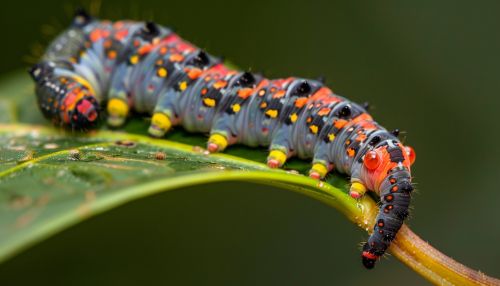Caterpillar
Introduction
The caterpillar is the larval stage of members of the order Lepidoptera, the insect order comprising butterflies and moths. As with most common names, the application of the word is arbitrary and the larvae of sawflies are commonly called caterpillars as well.
Anatomy and Morphology
Caterpillars have soft bodies that can grow rapidly between moults. Their size varies between species and instars (moults) from as small as 1 mm up to 14 cm. Some larvae of the order Hymenoptera (ants, bees, wasps) are often mistaken for the larvae of the Lepidoptera, because they are similar in size, shape and behavior.


Life Cycle
Caterpillars have a distinct, hard, outer head capsule with several pairs of simple eyes. The thorax and abdomen bear false legs which help them cling to plant surfaces and move around. The life cycle of a caterpillar can be divided into four stages: egg, larva, pupa, and adult.
Diet and Feeding
Caterpillars are voracious feeders and many of them are considered pests in agriculture. Many moth species are better known in their caterpillar stages because of the damage they cause to fruits and other agricultural produce.
Defense Mechanisms
Apart from the butterfly or moth that it will become, the appearance of a caterpillar can often repel a predator. Its bright coloring, dark, circular markings can imitate the eyes of a larger animal, through deimatic behaviour, startling or scaring off potential predators, or protect it by camouflage.
Cultural Significance
Caterpillars have been the subject of various cultural depictions, from the proverbial hookah-smoking caterpillar in Lewis Carroll's Alice's Adventures in Wonderland to the popular children's character, The Very Hungry Caterpillar.
